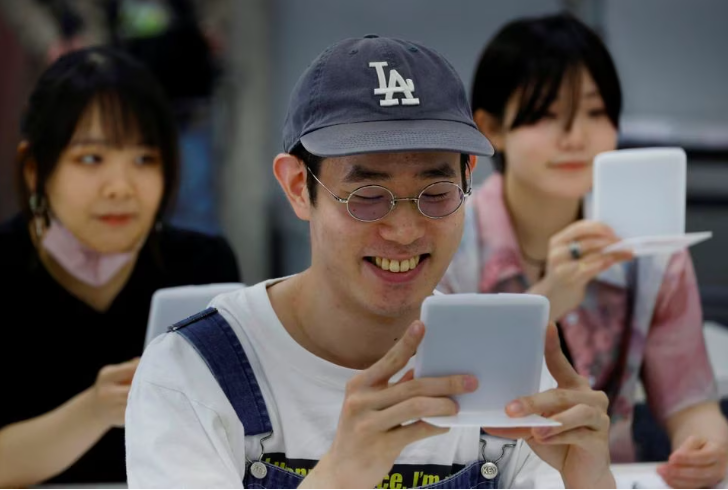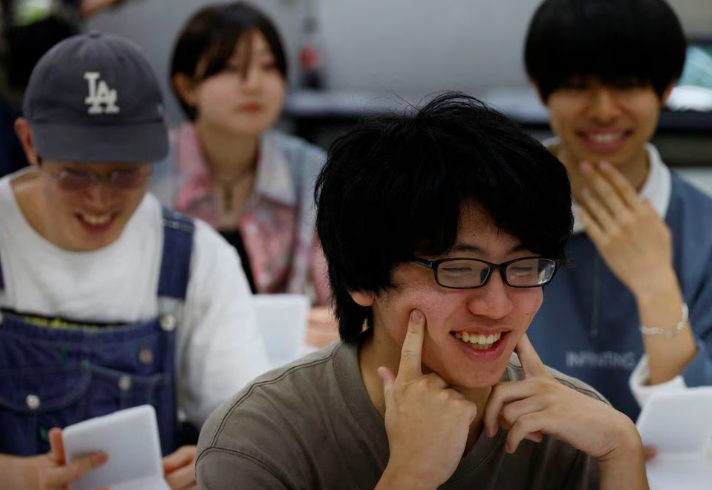In the wake of mask restrictions easing across Japan, smile training has become increasingly popular among the Japanese population. Keiko Kawano, a prominent smile instructor, has witnessed a significant surge in demand for her services as mask-wearing, which had become ubiquitous during the pandemic, slowly diminishes.
In Tokyo, more than a dozen art school students recently attended one of Kawano’s classes, where they diligently held mirrors to their faces and practiced stretching their mouths upward with their fingers, perfecting the art of smiling. While smile training might not be an obvious choice for most, the increasing demand reflects a growing realization among the Japanese populace that their smiles need rekindling after months of limited facial expression due to mask-wearing.
Kawano’s company, Egaoiku, meaning “Smile Education” in Japanese, has experienced a remarkable four-fold jump in demand compared to last year. This surge is driven by a wide range of customers, including companies seeking more approachable salespeople and local governments aiming to enhance the overall well-being of their residents. One-on-one smile training lessons, lasting an hour, are priced at 7,700 yen ($55).

Even before the pandemic, donning masks was a common practice in Japan, particularly during hay fever season and exam periods when individuals sought protection against illness. Although the government lifted its recommendation to wear masks in March, many Japanese citizens have continued to wear them daily. A recent poll conducted by public broadcaster NHK revealed that 55% of Japanese respondents reported wearing masks as frequently as they did two months earlier, while only 8% claimed to have stopped wearing masks altogether.
Interestingly, during Kawano’s class, approximately 25% of the art school students chose to keep their masks on, perhaps indicating that the younger generation has grown accustomed to a masked lifestyle. Kawano observed that women might find it more convenient to forgo makeup when going out, while men can hide the fact that they haven’t shaved under their masks.
Since 2017, Kawano, a former radio host, has not only been imparting smile training herself but has also trained 23 others as smiling coaches to spread the techniques and virtues of crafting the perfect smile across Japan. Her renowned “Hollywood Style Smiling Technique” focuses on elements such as “crescent eyes,” “round cheeks,” and shaping the mouth to reveal a row of eight upper pearly whites. Students can assess their progress by trying out their smiles on a tablet and receiving a score based on their performance.

Kawano believes that Japanese people may be less inclined to smile compared to their Western counterparts due to cultural factors, such as a sense of security as an island nation and a unitary state. Paradoxically, she suggests that the presence of guns in Western societies might actually encourage more smiling, as a smile signifies a lack of threat. With the increase in inbound tourists, Japanese people now recognize the importance of effective non-verbal communication, including the power of a smile.
“There’s a growing need for people to smile,” Kawano emphasized. As masks gradually become less prevalent and Japan adjusts to a new post-pandemic normal, smiling is being rediscovered as a valuable skill for personal and professional interactions.




